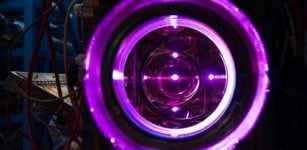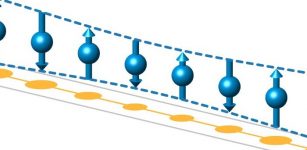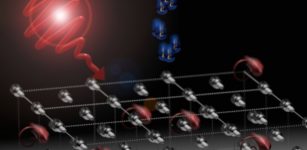New Model Fills The Gap Between Quantum Simulators And Quantum Computers
Eddie Gonzales Jr. – MessageToEagle.com – A researcher from Skoltech has filled in the gaps connecting quantum simulators with more traditional quantum computers, discovering a new computationally universal model of quantum computation, the variational model.
 source: Petrovich12 /adobe stock
source: Petrovich12 /adobe stock
A quantum simulator is built to share properties with a target quantum system we wish to understand. Early quantum simulators were ‘dedicated’—that means they could not be programmed, tuned or adjusted and so could mimic one or very few target systems.
Modern quantum simulators enable some control over their settings, offering more possibilities.
In contrast to quantum simulators, the long-promised quantum computer is a fully programmable quantum system. While building a fully programmable quantum processor remains elusive, noisy quantum processors that can execute short quantum programs and offer limited programmability are now available in leading laboratories around the world. These quantum processors are closer to the more established quantum simulators.
Despite today’s prototype quantum processors suffering from noise and a general lack of controllability, we have seen amazing demonstrations of quantum computational supremacy by Google as well as scientists in China. Quantum computational supremacy shows that quantum processors can perform certain tasks dramatically faster than even the world’s leading supercomputers.
Quantum computational supremacy was achieved using only limited programmability: a fixed and short quantum program, or circuit, can be tuned, followed by simplistic quantum measurements. Researchers around the world are questioning how far this simplistic approach might be pushed towards applications that are more practical than quantum supremacy.
“When does a quantum simulator become a quantum computer? The quantum processors at Google and elsewhere have often been described as being “situated somewhere between a dedicated quantum simulator and a programmable quantum computer.” The ad hoc approach used by Google and others was to variational tune a quantum circuit to minimize a cost function calculated classically. This approach turns out to represent a universal model of quantum computation, meaning that a quantum simulator only needs limited additional control to execute general quantum algorithms,” Skoltech’s Associate Professor Jacob Biamonte said in a press release.
Biamonte, who heads the Laboratory for Quantum Information Processing, has proved, as the editors of the journal note, “that the contemporary variational approach to quantum-enhanced algorithms enables a universal model of quantum computation.” The editors went on to state, “This brings the resources required for universal quantum computation closer to contemporary quantum processors.”
“The study bridges the gap between a programmable quantum simulator and a universal quantum computer. The analysis provided a new means to implement quantum algorithms using a variational approach,” Biamonte says.
Written by Eddie Gonzales Jr. – MessageToEagle.com Staff










